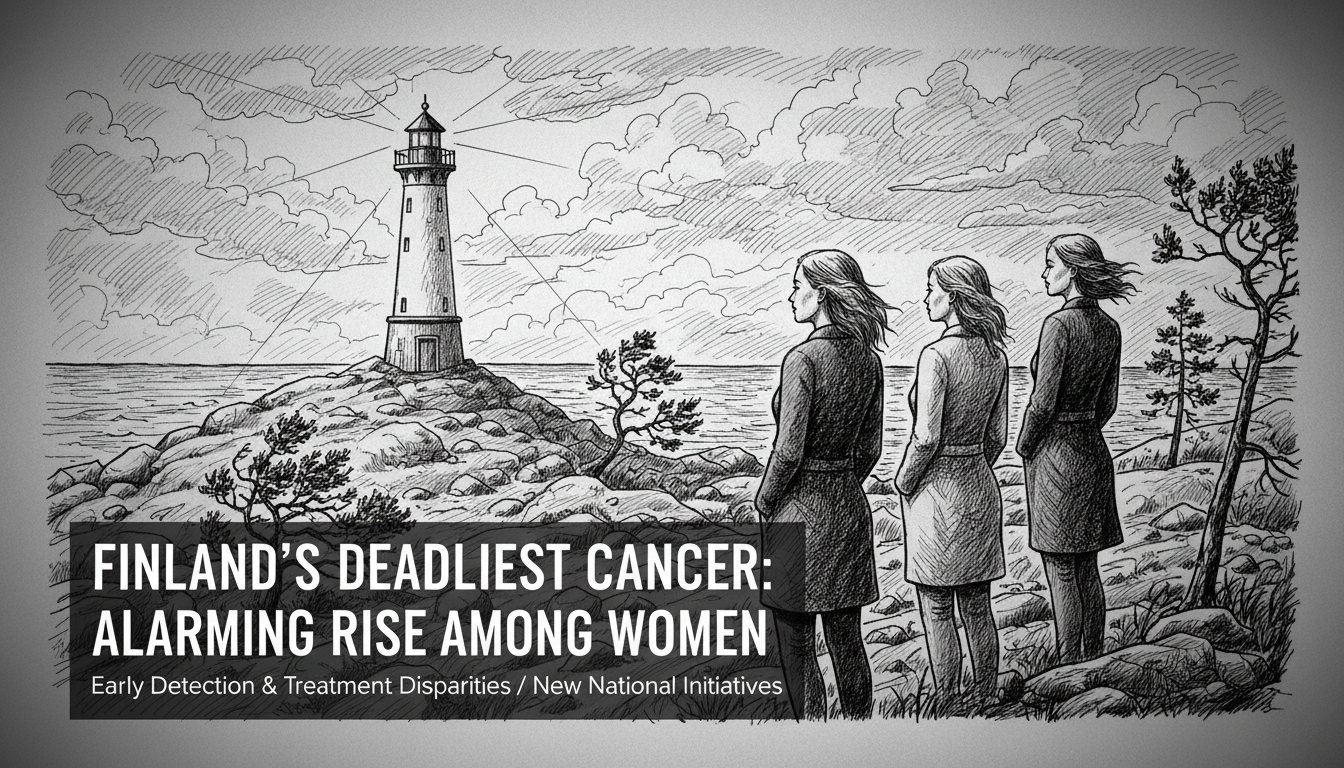Lung cancer remains Finland's most lethal form of cancer, claiming over 2,000 lives annually while nearly 3,000 Finns receive new diagnoses each year. This disease demonstrates a concerning trend as cases increase among non-smoking working-age women, with approximately four out of ten lung cancer cases now occurring in women.
Medical experts note that lung cancer in non-smokers typically presents as adenocarcinoma, a specific subtype. Specialist Chief Physician Miia Aro from the Finnish Lung Health Association explains that non-smoker lung cancer often involves genetic factors and environmental exposures. These cases frequently feature specific mutations that researchers have identified, with targeted medications available for some variants.
Finland faces a unique challenge as smoking rates decline nationwide and globally. Aro predicts this will reduce smoking-related lung cancers but increase the percentage of cases occurring in non-smokers. The absolute number of non-smoker cases remains uncertain, creating a complex public health picture.
Early detection proves difficult since lung tissue lacks pain receptors, allowing the disease to progress silently. Patients often discover their condition accidentally during imaging for respiratory infections. Medical professionals urge consultation for persistent symptoms including prolonged coughing lasting over 3-4 weeks, bloody phlegm, breathing difficulties, or recurrent lung inflammations.
Early diagnosis remains crucial because complete surgical removal offers the best curative option when possible. Research from the University of Eastern Finland reveals concerning gaps in healthcare engagement, with 60% of chronic cough sufferers avoiding medical consultation despite most experiencing symptoms for at least one year.
Researcher Johanna Kaulamo's dissertation highlights how this pattern potentially delays diagnosis of serious conditions like lung cancer among elderly populations. She emphasizes the need for increased public awareness about chronic cough causes and appropriate medical evaluation.
Advanced lung cancer manifests diversely depending on metastasis locations, causing general symptoms like appetite loss, nausea, weakness, fatigue, fever, weight loss, and bone pain. Brain metastases can trigger paralysis, vision disturbances, or other neurological symptoms.
Treatment selection and patient prognosis depend on tumor type, disease spread, and overall patient health. Finland trails other Nordic countries in lung cancer survival rates, with just 15% of patients alive after five years compared to 17-20% in neighboring nations.
The new National Lung Cancer Program aims to address this gap by improving diagnostics and treatment nationwide. Proposed measures include considering targeted screening for high-risk groups, particularly long-term smokers, while simultaneously working to reduce lung cancer stigma that sometimes delays healthcare seeking.
Smoking causes approximately 80% of lung cancer cases, with smokers facing 15-30 times higher risk than never-smokers. Risk factors include smoking initiation age, quantity smoked, and duration of habit. Passive smoking increases danger 2-3 times, while environmental exposures to arsenic, nickel, chromium compounds, radon, and asbestos significantly elevate risk. Notably, asbestos exposure multiplies a smoker's risk by 50 times.
Other risk enhancers include chronic obstructive pulmonary disease and previous tuberculosis infections. Despite smoking's dominant role, 10-15% of lung cancer patients never smoked, underscoring the disease's complex etiology and the importance of broader prevention strategies beyond tobacco control.
Finland's healthcare system now faces the dual challenge of maintaining smoking cessation progress while addressing emerging patterns in non-smoker lung cancer. The situation reflects broader global trends where declining smoking rates reveal previously obscured risk factors and patient populations requiring targeted approaches.

